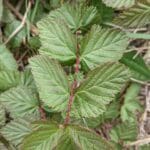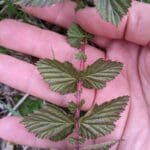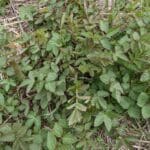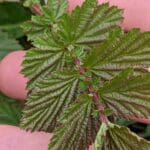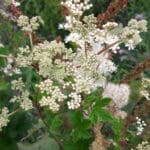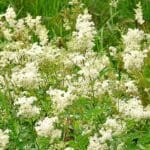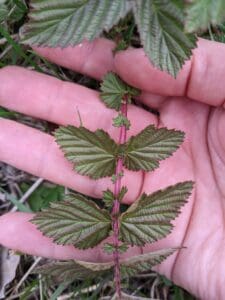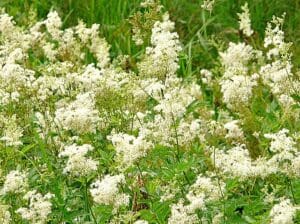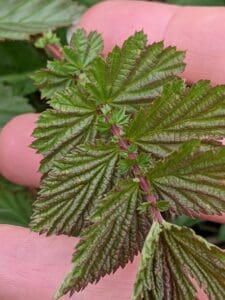Meadowsweet / Spring / Summer / Autumn / Edible
Common Names
Mead wort, queen of the meadow, pride of the meadow, meadow-wort, meadow queen, lady of the meadow, dollof, meadsweet, and bridewort.
Botanical Name
Filipendula ulmaria
Scientific Classification
Kingdom – Plantae
Order –Rosales
Family – Rosaeae
Physical Characteristics for Meadowsweet
It is a perennial herb in the family Rosaceae that grows in damp meadows.
Leaves
Dark-green on the upper side and whitish and downy underneath, much divided, interruptedly pinnate, having a few large serrate leaflets and small intermediate ones. Terminal leaflets are large, 4–8 cm long, and three- to five-lobed.
Flowers
Delicate, graceful, creamy-white flowers clustered close together in irregularly-branched cymes, having a very strong, sweet smell. They flower from early summer to early autumn. Smells like Germolene when crushed. They show 5 sepals and 5 petals with 7 to 20 stamens.
Stem
1–2 m tall, erect and furrowed, reddish to sometimes purple.
Habitat
Grows in damp ditches throughout Europe and western Asia. It is native throughout most of Europe and Western Asia (Near East and Middle east). It has been introduced and naturalised in North America. Wet ground in swamps, marshes, fens, wet woods and meadows, wet rock ledges and by rivers, but not on acid peat.
Known Hazards
Avoid meadowsweet during pregnancy. Avoid if sensitive to salicylate (aspirin). Avoid for asthmatics. Use by children for diarrhoea not recommended or for children under 12 due to salicylate content (risk of Reye’s syndrome).
Could be Confused with
Young leaves can look similar to nettles or brambles but have no stings or thorns.
Edible Uses
Root – cooked. Young leaves – cooked as a flavouring in soups. Young leaves, flowers and roots are brewed into a tea. The dried leaves are used as a flavouring, especially as a sweetener in herb teas. The flowers are used as a flavouring in various alcoholic beverages and in stewed fruits. Adding them to wine or beer is said to make a very heady brew. They are also made into a syrup which can be used in cooling drinks and fruit salads.
Check out our Meadowsweet and Dandelion cheesecake recipe.

Notes on Herbal Uses
-
Antacid, Anti-inflammatory, antirheumatic, soothing digestive remedy, diuretic, diaphoretic, anticoagulant.
How to use
-
Infusion – Take 1 cup of infused leaves and flowers 3 times daily for feverish colds or mild rheumatic pains. Take 1/2 cup every 2 hours for acid reflux or indigestion. Can be given to children for stomach upsets.
-
Fluid extract – Take 2-5ml (40-100 drops) 3 times daily for gastritis, gastric ulceration, or chronic rheumatism. Combine with angelica, bogbean (Menyanthes trifoliata) or willow for arthritis.
-
Compress – Soak a pad in dilute tincture and apply to painful arthritic joints or for rheumatism or neuralgia.
Extra notes from the Foragers
 Meadowsweet leaves are commonly galled by the bright orange-rust fungus Triphragmium ulmariae, which creates swellings and distortions on the stalk and/or midrib.
Meadowsweet leaves are commonly galled by the bright orange-rust fungus Triphragmium ulmariae, which creates swellings and distortions on the stalk and/or midrib.



